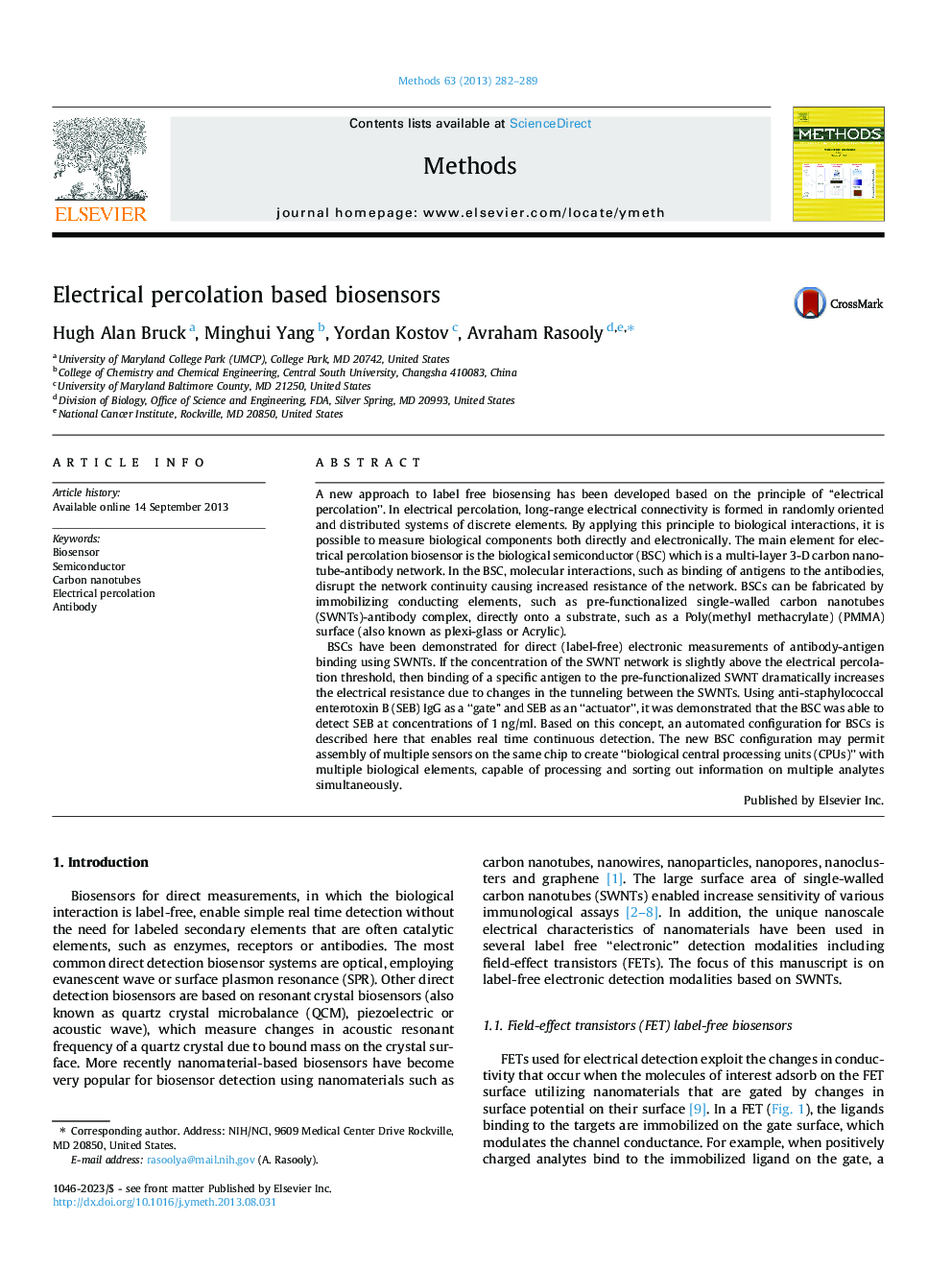| کد مقاله | کد نشریه | سال انتشار | مقاله انگلیسی | نسخه تمام متن |
|---|---|---|---|---|
| 1993544 | 1064677 | 2013 | 8 صفحه PDF | دانلود رایگان |

• Electrical percolation is based on electrical connectivity in randomly oriented systems of discrete elements.
• Biological semiconductor is a multi-layer 3-D carbon nanotube-antibody network with a biological ligand.
• Molecular interactions disrupt the network continuity causing increased resistance of the network.
• We demonstrated real time continuous detection of staphylococcal enterotoxin B at concentrations of 1 ng/ml.
• This new direct measurement biosensor has potential for multi-target real time detection.
A new approach to label free biosensing has been developed based on the principle of “electrical percolation”. In electrical percolation, long-range electrical connectivity is formed in randomly oriented and distributed systems of discrete elements. By applying this principle to biological interactions, it is possible to measure biological components both directly and electronically. The main element for electrical percolation biosensor is the biological semiconductor (BSC) which is a multi-layer 3-D carbon nanotube-antibody network. In the BSC, molecular interactions, such as binding of antigens to the antibodies, disrupt the network continuity causing increased resistance of the network. BSCs can be fabricated by immobilizing conducting elements, such as pre-functionalized single-walled carbon nanotubes (SWNTs)-antibody complex, directly onto a substrate, such as a Poly(methyl methacrylate) (PMMA) surface (also known as plexi-glass or Acrylic).BSCs have been demonstrated for direct (label-free) electronic measurements of antibody-antigen binding using SWNTs. If the concentration of the SWNT network is slightly above the electrical percolation threshold, then binding of a specific antigen to the pre-functionalized SWNT dramatically increases the electrical resistance due to changes in the tunneling between the SWNTs. Using anti-staphylococcal enterotoxin B (SEB) IgG as a “gate” and SEB as an “actuator”, it was demonstrated that the BSC was able to detect SEB at concentrations of 1 ng/ml. Based on this concept, an automated configuration for BSCs is described here that enables real time continuous detection. The new BSC configuration may permit assembly of multiple sensors on the same chip to create “biological central processing units (CPUs)” with multiple biological elements, capable of processing and sorting out information on multiple analytes simultaneously.
Figure optionsDownload as PowerPoint slide
Journal: Methods - Volume 63, Issue 3, October 2013, Pages 282–289